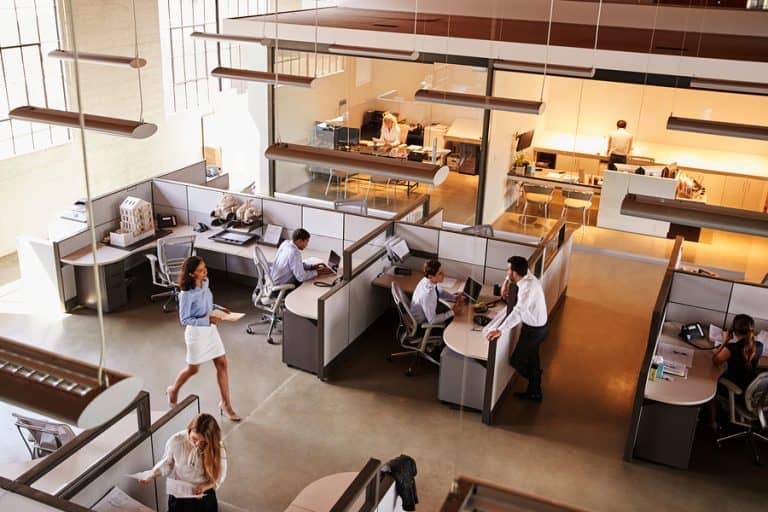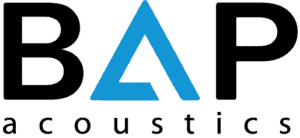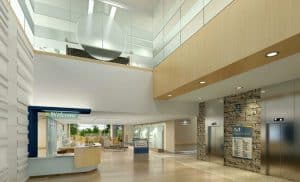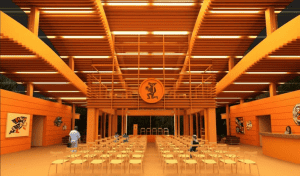
In which we learn all about space…
Published in 2021, ISO 22955 addresses the longstanding and well-known challenges that open-plan offices pose to occupants as well as to acoustic designers. A more detailed Acoustic Bulletin article, ISO 22955: Acoustic quality of open offices, cites The Leesman Review, Issue 31, Leesman Index 2021, which reports that 70% of office workers worldwide are dissatisfied with their workplace acoustic environment.
Notable among the numerous reasons behind these difficulties is the reality that most open-space office environments must accommodate a broad range of activity types, each with unique requirements and characteristics.
Obviously, the logistics involved in all this are pretty complex, so ISO 22955 addresses several common office tasks and explains them from an acoustic point of view. (Or point of sound, if you will.) Each activity corresponds to a space type for which the standard provides specific acoustic indicators and values. Listed below are the space types, along with key acoustic takeaways for each:
Space type 1: Vacant Floor – activity still unknown
- Builds with tight deadlines or those meant for rental occupancy may involve on-the-fly decisions regarding area use.
- In these cases, it’s best to focus on base build fundamentals—such as materials and geometry—to ensure high levels of layout flexibility and inherent acoustic quality.
Space type 2: Tele- and video communication
- Often referred to as call centres, these spaces are designed for non-collaborative, continuous activity that tends to generate a fair amount of ambient noise.
- An exacerbating factor, the Lombard Effect—the tendency for humans to raise their voices in the presence of noise—increases noise levels further still.
- Unable to sustain focused attention and mental clarity, occupants are prone to increased stress as well as vocal strain.
- Acoustic designers should prioritize strategies to dampen noise levels, sound propagation, and reverberation—while optimizing speech privacy.
Space type 3: Primarily collaborative work
- Group work and verbal communication are predominant, while periodic individual tasks requiring mental focus also occur.
- Field examples include advertising, design, consulting, and marketing.
- Sound sources and noise levels vary and fluctuate in these lively environments.
- High levels of speech intelligibility between nearby workstations represent the most important acoustic planning goal here.
Space type 4: Sporadic collaborative work
- Suitable for activities including administration, HR, accounting, and design engineering, these acoustic spaces must support high mental performance.
- These relatively quiet spaces most often accommodate desk work interspersed with brief vocal interactions.
- Optimal acoustic design will ensure: low reverberation; good speech intelligibility at short distances; and reduced sound propagation to minimize disturbances across longer distances and larger offices.
Space type 5: Receiving the public
- Typified by hotels, retail outlets, and local authority offices, these spaces feature activities involving impromptu interactions as well as various degrees of individual work. Think of the harried receptionist. (I’ve been one, so I’d rather not.)
- Savvy acoustic designers will plan for:
- the prevention of escalating ambient noise levels.
- accommodating those engaged in the most demanding activity without disturbing staff concentration.
- excellent speech intelligibility between visitors and those who greet them.
- a high degree of speech privacy between this space and adjoining ones, including nearby waiting areas.
Space type 6: Mixed activities
- Although it most commonly exemplifies the open office, this space type defies definition, given the exhaustive list of possible activities that might occur within it: desk work; digital communication; formal and informal meetings; and recreation, to name but a few.
Generally speaking, the more varied the activities, the greater the demands for acoustic treatment and separation.

Speaking of collaborative work:
standard contributions
Standard development is not a solitary pursuit, and the International Organization for Standardization accordingly recognizes numerous teams and individuals who made possible the publication of ISO 22955. Notable among these are UK-based Jack Harvie-Clark and his colleagues at Apex Acoustics. Cited in the standard, Jack and his team developed the Apex Approach, a methodology for assessing acoustic conditions within activity-based working offices. A tool designed to identify the potential for conflicting acoustic requirements among different activity types, the method provides guidelines for ensuring sufficient sound attenuation between work areas.
Closing words
Shh! I’m keeping my voice down because our living room is an ‘open-space’ environment…and while my co-occupant is cute, I’m not sure we can trust her with the significantly opinion-based and loosely-empirical information that follows. (Though I am sure we can’t trust her around our lunches.)

ICYMI—social media short-hand for in case you missed it—we’re in the thick of a post-pandemic global labour shortage. But even long before 2020 inexorably changed our world, numerous studies were published, and much has been written about: open-plan workplace pros and cons; employee wellbeing relative to productivity; as well as staff retention and/or turnover rates.
Caveat: I’m no math or statistics whiz. But the good folks who pay me to write this content? Well, they absolutely slay at those things, not to mention physics! That being clarified, I present a humble layperson’s observations and conclusions pertaining to workplace acoustics:
- Employee satisfaction and wellbeing positively correlate to employee productivity and retention.
- Work environments characterized by high acoustic quality contribute significantly to employee satisfaction and wellbeing.
- Actual standards have been established to promote such acoustic quality.
Ergo, it’s a really, really good idea to contact BAP Acoustics with all your soundwave-related workplace planning questions. Even when they’re not strictly enforced—Canada, see Europe and take notes, please—we love standards, and we know how to use them!



